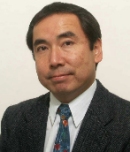
Plenary Lecture
Use of Bone-Conducted Speech for Speech Enhancement

Professor Tetsuya Shimamura
Information Technology Center
Saitama University
Japan
E-mail: shima@sie.ics.saitama-u.ac.jp
Abstract: In speech processing applications like hands-free communications, hearing aids and speech recognition, the technique of speech enhancement is often required. During the past few decades, significant progress has been made in the development of speech enhancement algorithms. Those algorithms accomplish the purpose of reducing noise, and as a result have been successfully used. However, in severely noisy environments, those algorithms introduce waveform distortion, resulting in that the intelligibility of the resulting speech is degraded. In this plenary speech, as an old but new technique for speech enhancement, bone-conducted speech is considered. The transmission of voice on bones is called bone conduction. When the voice waveforms are transmitted from the voice source (vocal cord) through the vocal tract wall and skull, they do not confront directly with noise. This is the reason why the bone-conducted speech signal can be utilized in a very noisy environment. However, it is known that the quality of bone-conducted speech is comparatively lower than that of normal speech being transmitted through air. This may be caused by the fact that the frequency components more than 1[kHz] deteriorate in bone-conducted speech. A straightforward method to improve the quality of bone-conducted speech is to emphasize the high frequency components of bone-conducted speech. However, this has been not accepted in many cases. One of the reasons may be that the phenomenon of bone conduction is speaker dependent. Thus, in this plenary speech, as a speaker-dependent technique, the use of an air- and bone-conduction integrated microphone is mainly discussed. Also, it is presented that the quality of bone-conducted speech can be significantly improved by combining adequately both the normal and bone-conducted speech signals. The goal of this kind of research is to obtain a clean speech signal even in highly noisy environments.
Brief Biography of the Speaker: Tetsuya Shimamura received the B.E., M.E., and Ph. D. degrees in electrical engineering from Keio University, Yokohama, Japan, in 1986, 1988, and 1991, respectively. In 1991, he joined Saitama University, Saitama City, Japan, where he is currently a Professor. During this, he joined Loughborough University, UK, and The Queen’s University of Belfast, UK, in 1995 and 1996, respectively, as a visiting Professor. He is an author or co-author of six books, and a member of the organizing committee of several international conferences. His interests are in digital signal processing and its applications to speech, image and communication systems. He received a Gold Paper Award at IEEE Pacific Rim Conference on Communications, Computers and Signal Processing in 2011, and a Best Paper Award at WSEAS International Conference on Multimedia Systems and Signal Processing in 2013, respectively. He also received a Best Paper Award from Research Institute of Signal Processing Japan in 2013 and 2015.